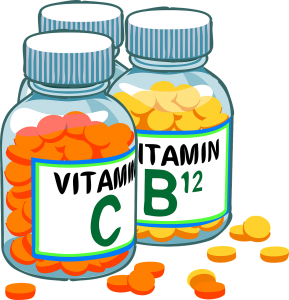
Listen to this blog in less than 10 minutes here (bottom of blog).
Why Your Body Needs Nutrients: A Review
Last week I discussed the vital role of nutrients for optimal functioning in the body. Due to our modern, stressful lifestyle, many people are deficient in a variety of vitamins and minerals that their bodies need to thrive. Several reasons for this include:
- poor quality or insufficient nutrient-dense diets
- chronic restrictive dieting
- chemical and toxin exposures
- soil depletion
- individuals’ genetic variations in mineral and vitamin utilization
- malabsorption syndromes and diseases
- differing health states of individuals
- following reference ranges designed for a healthy population when one is currently not in an optimal state of wellness
Caveats of a Quick (Supplement) Pill Pop
Due to these factors, many may choose to use supplements to fill in nutritional gaps, but there are other considerations. These essential components must exist in a delicate balance and within specific ranges.
For example, on my homepage blog, I highlighted calcium’s many roles in the body, including its connection to bone health. Of course, it is important to ensure adequate levels of this mineral for its role in vital processes; however, taking one single nutrient in high doses, without assessing need for it, can cause imbalances in other nutrients. This could potentially create more issues for our wellness goals.
For this reason, we need to think of the word “synergy” for the “complexity factors” interaction related to the balance between all the vitamins, minerals, and nutrients… as much as we think about it for essential oils. I provided a blog on one specific, synergistic formula as an example for how to supplement with calcium while taking these aspects into account. Specifically, the highlighted supplement included Vitamin K2, Vitamin D, and other synergistic minerals and herbs to support calcium’s optimal functioning while preventing unwanted calcifications.
These considerations for the “goldilocks” dosage and the necessity of incorporating synergistic nutrients are imperative regarding the many mineral-vitamin interactions when supplementing. An integrative practitioner who is aware of these influences can be a helpful guide to what your particular body may need. I believe it is wise to consider each individual’s unique needs in order to optimize the body and one’s pocketbook.
The good news is, thankfully, when you look at comparison of safety reports and side effects, supplements have a very low risk, compared to medications, even with these caveats. I have written about this in detail here.
One recent review summarized these factors and concluded the importance of assessing the need of the individual and their current health status, several interactive factors, and the benefit of synergy when deciding on choosing a multivitamin (MVM):
When choosing an MVM product, consumers should take a preparation that is tailored to their age, gender, family history/risk factors, and stage of life, including the childbearing years and the senior years. Wherever possible, the specific MVM formulation selection should be based on a nutritional assessment that identifies deficiencies as well as inadequate or erratic intake that can put a person at risk for deficiencies. The decision to take an MVM, like the decision to take any drug or supplement, should consider whether any potential risks outweigh the benefits. For example, smokers and, possibly, former smokers should avoid MVMs with large amounts of β-carotene or vitamin A, because studies have linked these nutrients to an increased risk of lung cancer in this population [42,43]. Taking excess vitamin A (as preformed retinol but not β-carotene) during pregnancy can increase the risk of birth defects, so women capable of conceiving should consider the advice to limit daily consumption of preformed vitamin A to 10,000 IU/d (3,000 μg/d) or less [91]. Likewise, the Centers for Disease Control and Prevention recommends all women capable of becoming pregnant take 400 μg folic acid daily to help prevent birth defects [4]. Most healthy adult males and postmenopausal women should also avoid MVMs with more than 8 mg of iron and limit their total iron intake to 45 mg/d [91].

Factors that Relate to Inconsistent and Confusing Conclusions in Studies Assessing Nutrients
Unfortunately, taking single, isolated nutrients has been the topic of many studies. Due to the EBM model (evidence-based medicine model), researchers aim to compare and test a nutrient similarly to a drug. Although this model is the gold standard and should be utilized, there are some pitfalls when applying it to natural approaches.
Besides the above caveats not being considered, vitamins and minerals are quite different than medications in biochemical responses and need to be individually assessed. For these reasons, this method of testing has resulted in inconsistent or conflicting data.
This has caused controversy among physicians and researchers on the benefits and risks of using nutrients for prevention of disease processes and/or to achieve wellness goals.
I have expanded on these caveats and cited additional factors below.
Why We are Living in the Land of Confusion of Study Outcomes on Supplements
1. Many nutrients in studies are administered in isolation without accounting for the mineral-nutrient interactions. This could impact several other minerals and cause imbalances with potential pitfalls related to the following:
- calcium competes with manganese
- high levels of calcium can decrease iron
- calcium can reduce zinc levels
- Vitamin D, A, and K2 are important to prevent calcifications in soft tissues
2. Trials also often don’t account for nutrient-drug interactions. These would affect availability of both the medication and certain vitamins and minerals. For example, large doses of a single nutrient may inhibit levels of a drug, altering therapeutic levels that may be required. If interfering factors were more well-known and considered, those individuals affected should have ethically been excluded from the study or levels adjusted accordingly.
A January 2018 article in American Heart Journal recently exemplified this point. This was a re-analysis of a study on a population of those who previously suffered a heart attack, or myocardial infarction in the Trial to Assess Chelation Therapy (TACT). According to the journal, “TACT was a factorial trial testing chelation treatments and a 28-component high-dose oral multivitamins and multiminerals regimen versus placebo in post–myocardial infarction (MI) patients 50 years or older.”
When the authors compared nonstatin participants to statin users to determine the effects of the nutrient intervention, they concluded, “High-dose oral multivitamin and multimineral supplementation seem to decrease combined cardiac events in a stable, post-MI population not taking statin therapy at baseline. These unexpected findings are being retested in the ongoing TACT2.”
I suspect there may have been some drug-nutrient interactions in the statin population, not yet well known, in which either higher or lower doses of these minerals and vitamins were needed to positively influence outcomes.
3. Bad study designs and biases could have further lead to misrepresentation of harm of nutrients. These factors include trial limitations, incorrect dosages for the condition given, not accounting for quality of the supplements, and more.
An excerpt from a previous blog explains more on this specific factor using an example:
The anti-vitamin and supplement attack has been occurring for many years. For example, in December 2013 in the Annals of Internal Medicine, there was a big ado about the supposed useless value of multivitamins for overall, cognitive, and cardiovascular health. This was based on three studies. However, the methodology used for the various studies had several flaws. These included:
- using the incorrect form of certain vitamins.
- not considering absorption efficacy of the supplement; i.e. how can it work if it’s not absorbed and assimilated well?
- baseline need for the intervention wasn’t considered; i.e. a “highly nourished” population would make the need for multivitamin or additional nutrients appear less necessary and effective. This is because the subjects were already “nutrient sufficient.” (A comparison to this would be using a drug for a condition you don’t have.)
- poor adherence to the intervention and high dropout rates were found in the cardiovascular study. (Note: this can confound results.)
I discuss all of these in more detail here.
4. Finally, testing a nutrient that has no established connection to the symptom or disease has tainted a nutrient’s good name. I provide an example of this with the trial of using calcium and vitamin D for hot flashes. Huh?
I’m sure there are more reasons, but for brevity sake, and your (and my) sanity, I’ll stop there.
Overall Summary on Minerals, Vitamins, and Supplementation:
Individual nutrients, especially at high doses, should ultimately be given based on the individual’s need and biochemistry to prevent causing more imbalances. There is less likely to be issues with synergistic and complex formulations that account for the various interactions of nutrients. Specific populations should be aware of risks with some isolated vitamins and minerals, such as smokers avoiding beta-carotene; whereas, just as importantly, deficiencies in certain nutrients can cause harm. For example, women should consider folate during pregnancy (yes “folate” not folic acid).
Even with all the above considerations, overall, there have been very few harms associated with supplements. Most issues are related to certain populations with specific, high dose, isolated nutrient and/or poorly thought out and implemented studies.
Thanks Pixabay.



